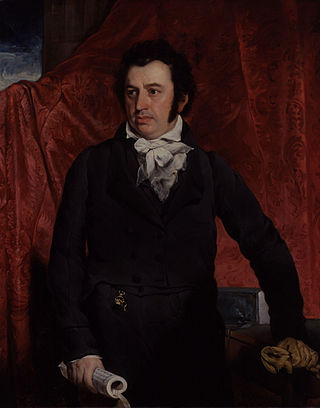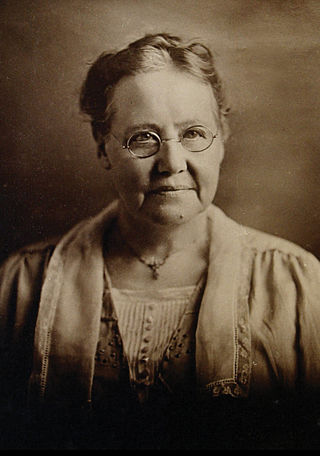Related Research Articles

Liang Fa (1789–1855), also known by other names, was the second Chinese Protestant convert and the first Chinese Protestant minister and evangelist. He was ordained by Robert Morrison, the first Protestant missionary in the Qing Empire. His tract Good Words to Admonish the Age was influential on Hong Xiuquan, who went on to lead the Taiping Rebellion.

Abdullah bin Abdul al Kadir (1796–1854) also known as Munshi Abdullah, was a Malayan writer. He was a famous Malacca-born munshi of Singapore and died in Jeddah, a part of the Ottoman Empire.

Walter Henry Medhurst, was an English Congregationalist missionary to China, born in London and educated at St Paul's School. He was one of the early translators of the Bible into Chinese-language editions.

Robert Morrison, FRS, was an Anglo-Scottish Protestant missionary to Portuguese Macao, Qing-era Guangdong, and Dutch Malacca, who was also a pioneering sinologist, lexicographer, and translator considered the "Father of Anglo-Chinese Literature".

The Singapore Stone is a fragment of a large sandstone slab which originally stood at the mouth of the Singapore River. The large slab, which is believed to date back to at least the 13th century and possibly as early as the 10th or 11th century, bore an undeciphered inscription. Recent theories suggest that the inscription is either in Old Javanese or in Sanskrit, which suggested a possibility that the island was an extension of the Majapahit civilization in the past.

The Prinsep Street Presbyterian Church is located on Prinsep Street within Singapore's central business district. It is approximately 350 metres from Rochor MRT station.

Samuel Dyer was a British Protestant Christian missionary to China in the Congregationalist tradition who worked among the Chinese in Malaysia. He arrived in Penang in 1827. Dyer, his wife Maria, and their family lived in Malacca and then in Singapore. He was known as a typographer for creating a steel typeface of Chinese characters for printing to replace traditional wood blocks. Dyer's type was accurate, aesthetically pleasing, durable, and practical.

Malay was first used in the first millennia known as Old Malay, a part of the Austronesian language family. Over a period of two millennia, Malay has undergone various stages of development that derived from different layers of foreign influences through international trade, religious expansion, colonisation and developments of new socio-political trends. The oldest form of Malay is descended from the Proto-Malayo-Polynesian language spoken by the earliest Austronesian settlers in Southeast Asia. This form would later evolve into Old Malay when Indian cultures and religions began penetrating the region, most probably using the Kawi and Rencong scripts, some linguistic researchers say. Old Malay contained some terms that exist today, but are unintelligible to modern speakers, while the modern language is already largely recognisable in written Classical Malay of 1303 CE.

William Milne was the second Protestant missionary sent by the London Missionary Society to China, after his colleague, Robert Morrison. Milne served as pastor of Christ Church, Malacca, a member of Ultra-Ganges Mission, the first Principal of Anglo-Chinese College, and chief editor of two missionary magazines: Indo-Chinese Gleaner (English), and Chinese Monthly Magazine (察世俗每月統記傳). Due to Milne's distinguished role in his missionary field, the University of Glasgow granted him a Doctor of Divinity (D.D.) in 1820.
Sir Song Ong Siang was a lawyer and active citizen of the British Crown Colony of the Straits Settlements. He was an ethnic Hokkien as well as a third generation Hokkien Peranakan Baba Chinese with ancestry from Zhangzhou in Minnan region, and the first ever Asian in Singapore to be knighted. Song was noted for his contributions to the development of the Singapore civil society, and was held in esteem throughout the Colony.
Wat Ngong (1785–1867), also known by various other names, was a Chinese Protestant convert, evangelist, and writer from Guangzhou during the Qing dynasty. He was an early lithographer in Malacca, Macao, Guangzhou, and Hong Kong, possibly the first Chinese to master the craft.
The Presbyterian Church in Malaysia or GPM is a Christian church in Malaysia. Established as an independent synod in 1974, it currently has approximately 7,000 members in 100 congregations nationwide.

Sophia Blackmore was an Australian Christian missionary. She founded the Fairfield Methodist Schools, and also Methodist Girls' School in Singapore. She was the first woman missionary sent by the Woman's Foreign Missionary Society of the Methodist Episcopal Church to Singapore. She also set up a boarding home for girls, supported the early Methodist Straits Chinese Christian work, published a Christian periodical in Baba Malay, and is closely associated with the founding of Kampong Kapor Methodist Church.

Hikayat Abdullah is a major literary work by Abdullah bin Abdul Kadir, a Malacca-born Munshi of Singapore. It was completed in 1845 and first published in 1849, making it one of the first Malay literary texts to be published commercially. Abdullah's authorship was prominently displayed in this text and the contents were conveyed in simple, contemporary Malay. Unlike typical classical Malay literary works that contain mythical and legendary stories, Abdullah's work dealt with social realism.

David Griffiths, was a Welsh Christian missionary and translator in Madagascar. He translated the Bible and other books into the Malagasy language. The Malagasy Bible of 1835 was among the first Bibles to be printed in an African language.

William Girdlestone Shellabear (1862–1947) was a "pioneer" scholar and missionary in British Malaya. He was known for both his appreciation of Muslim society and also his translation of the Bible into the Malay language.

The Presbyterian Church in Singapore is a Presbyterian Reformed church. The current moderator is the Rt Rev Keith Lai.

Bible translations into Malay include translations of the whole or parts of the Bible into any of the levels and varieties of the Malay language. Publication of early or partial translations began as early as the seventeenth century although there is evidence that the Jesuit missionary, Francis Xavier, translated religious texts that included Bible verses into Malay as early as the sixteenth century.

The Bible Society of Singapore, Malaysia and Brunei was a nondenominational Christian organisation committed to translating and distributing the Bible in Singapore, Malaysia, and Brunei. It was the successor organisation to the Bible Society of Malaya, a branch of the National Bible Society of Scotland (NBSS). The Bible Society of Malaya prior to 1948 was a branch of the British and Foreign Bible Society (BFBS).

Sophia Cooke was a British missionary and schoolmistress at what is now St. Margaret's Secondary School in Singapore. She arranged church services in Chinese and helped distribute bibles in Malay and Arabic. She founded the YWCA in Singapore.
References
- 1 2 3 Thomas, David; Chesworth, John A. (2020). Christian-Muslim Relations. A Bibliographical History Volume 16 North America, South-East Asia, China, Japan, and Australasia (1800-1914). Brill Publishers. pp. 537–538. ISBN 9004429905.
- 1 2 3 4 5 6 Rahmat, Hadijah (2020). Abdullah Bin Abdul Kadir Munshi (In 2 Volumes). World Scientific. pp. 46–50. ISBN 9811205817.
- 1 2 3 4 5 6 7 8 9 Lee, Gracie. "Benjamin Keasberry". Singapore Infopedia. National Library Board . Retrieved 4 March 2023.